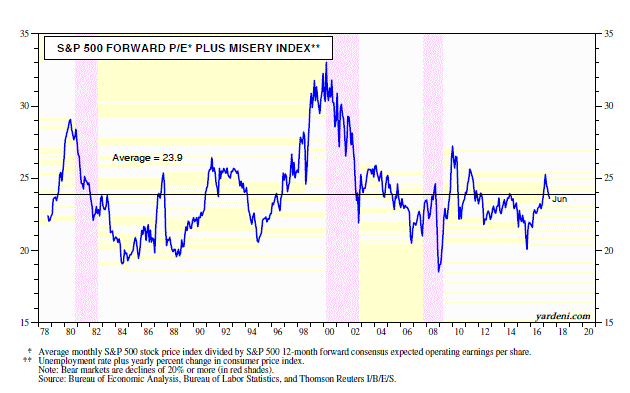While real GDP growth continues to amble along at a leisurely pace of 2.0% y/y, the labor market is sprinting at a fast pace. In the 7/31 Morning Briefing, I described my 2-2-2 economic scenario, with real GDP continuing to grow around 2.0% y/y, inflation remaining at or slightly below 2.0%, and the federal funds rate peaking late next year at 2.00%.
One of my accounts suggested the Four Deuces (2-2-2-2) scenario, adding the unemployment rate to the Three Deuces scenario. The jobless rate was 4.3% during July and could fall to 2.0%, which would be the lowest on record starting in January 1948. The low for this series was 2.5% during April and May 1953. A new record low, even at 2.0%, is conceivable if the Three Deuces scenario, continues to play out. That’s because having slow economic growth with subdued inflation and low interest rates increases the odds of a very long economic expansion, with the labor market continuing to tighten.
That would be ideal for my “long good-buy” scenario for the stock market, since bull markets usually don’t end until the unemployment rate falls to its cyclical trough and starts moving higher. The stock market also does well when the Misery Index, which is the sum of the unemployment rate and the inflation rate, is falling. Indeed, there is an inverse correlation between the Misery Index and the S&P 500 P/E since 1979. Consider the following:
(1) The sum of the forward P/E and the Misery Index has averaged 23.9 since 1979. It was 23.6 during June, suggesting that the stock market is fairly valued.
(2) A lower Misery Index, as a result of a further decline in the unemployment rate, would leave more room for P/E expansion without irrational exuberance. If the unemployment rate drops from 4.3% to 2.0% and the inflation rate remains at 2.0%, that would lower the Misery Index, leaving room for a reasonable increase in the forward P/E from 17.8 currently to 19.9 (since 19.9 + 4.0 = 23.9, which is the average of the Misery Index since 1979).


